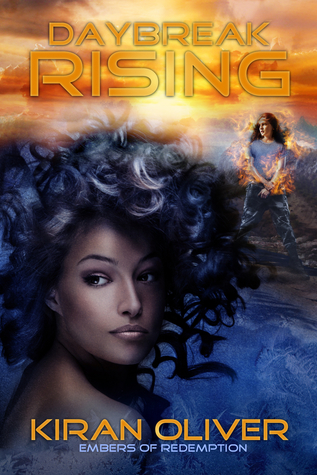
Reasons for Inclusion: Racially diverse cast, f/f relationship, nb character, blind character, trans characters, demi character, mental health and disability issues discussed, class issues discussed.
My Rating:
(4/5 stars)
My Review:
Daybreak Rising is one of the most anticipated books of the season in diverse fiction circles, and it’s one of the most diverse books I’ve recently read, not only in its characters but also in its landscapes and settings.
In this world, the Council rules strong, and Elementalists with magic powers are either killed or turned to the Council’s purpose. And our heroes are those who stand against them, even if they’ve failed before.
Our protagonist is a queer woman with PTSD, her girlfriend is demiromantic, a trans woman and man join in a little later on, and so does a blind woman. Their squad leader is nonbinary. And none of this is unusual or challenged.
Despite the conflict and the oppressive social structure, this is a world where queerness is accepted more often than not. Trans people get medical support from the government (even if this is often only a way for the regime to earn their loyalty), accessibility tech is commonplace, and the characters’ identities and romantic choices are rarely if ever challenged.
The cast comes from various social backgrounds, and this disparity causes tension at times, but they figure out to work together and they don’t need to be taught to appreciate each other’s point of view.
The vibrant worldbuilding deserves special mention. The characters come from and travel to many different countries and regions, all with varying climate, geography, religion, race, language, even food. All the details that make a world live and breathe: the smells of Kayvun’s seaside home, the silent religion of Basau, countless other little things, nothing is overlooked.
This attention to details comes through especially well in the sections from Kayvun’s point of view. Kayvun is blind, and so her parts of the story are brimming with tactile and auditory detail. She makes use of accessibility tech built into the base camp’s systems, a memorable example being serving dishes that announce the ingredients of the food being served.
These characters deal with both larger political and social issues and smaller personal issues: getting along in tight quarters and stressful circumstances, minor and major romantic entanglements, doubt and confusion, family issues, and the trauma that comes with war and oppression.
As in life, interactions can be uncomfortable and raw. Tempers fray in stressful situations. Celosia’s panic attacks become more frequent as situations come close to her past experiences. People make mistakes, offend others. People are forced to choose between their morals and their goals. But they keep on going, working towards freedom.
On the critical side, I found the writing style awkward at times, especially when something was explained directly that could have been implied or shown. Characters were frequently referenced by awkward epithets that I hope get cut in the final edition. At times the villains didn’t seem to have much of a motivation besides being something for our heroes to oppose. But those are mostly personal qualms, and other readers might see differently.
If you’re looking for a diverse ensemble cast, a fight for justice over oppression, and the coexistence of magic and technology, read Daybreak Rising.
